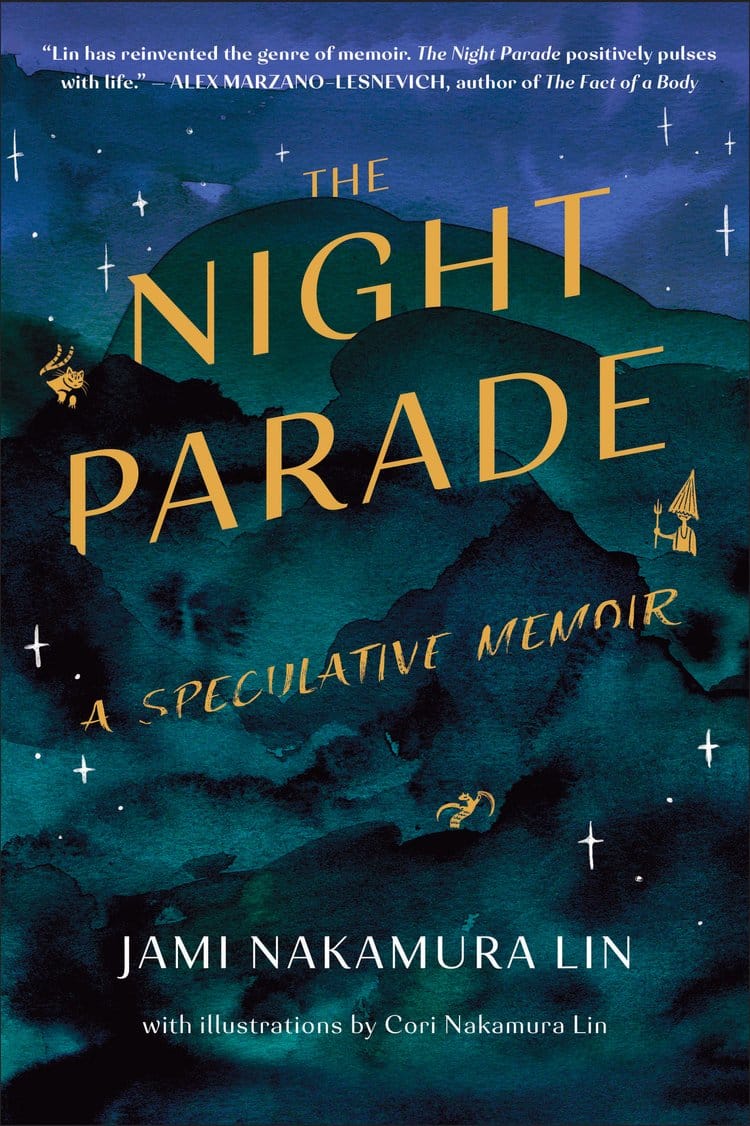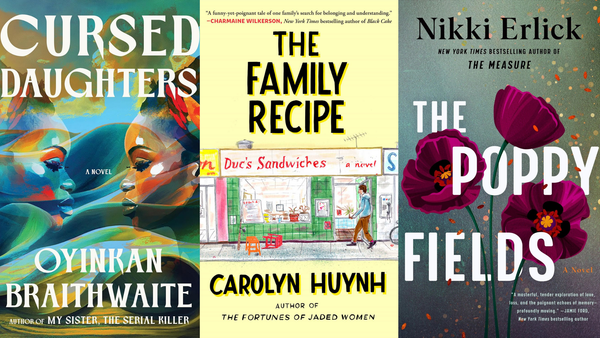Exploring the mythical experience of Jami Nakamura Lin’s ‘The Night Parade’
“The Night Parade” is part ghost story, part myth anthology, part memoir but full of heart.

As a child, Jami Nakamura Lin couldn’t stop telling stories to herself even after her parents kissed her goodnight — much to the dismay of her sister Cori.
“Can’t you just say them in your head?” she’d ask from the bottom bunk in their shared room.
“No,” Jami would reply every night. She’d try to whisper but to no avail. Cori could still hear her. Eventually, she learned to tell the stories silently, But in Nakamura Lin’s debut speculative memoir, “The Night Parade,” the stories return. This time, deftly remixing Japanese, Okinawan and Taiwanese mythology with her own journey with mental illness, grief and family.
“Sifting through my own archive, every arc I draw seems wrong.” Nakamura Lin writes. “Only in other stories can I find my way back to something that seems true.”
At the beginning of each chapter, Nakamura Lin introduces a concept or figure, such as oni-baba (“formerly human women who have transformed into demon hags and often feed on human flesh”) or one of the zodiac animals from the Lunar calendar. From there the chapters unfold into separate, nonlinear essays that take various forms: recounting her experiences in the second person, directly addressing her daughter and speculating about how they’ll talk about her mental health or an imagined conversation between her child-aged self and her grandparents.

When she delves into her experiences with undiagnosed bipolar disorder, anxieties about relationships, identity, her father’s cancer and eventual passing, and motherhood, it’s not just about the myths or just about her. It’s also about how these stories were passed down to her, how they changed over time due to various forces such as colonialism, and the discrepancies she found when she did further research — some of which took place on a grant-funded trip to Japan.
For readers familiar with the stories, the work the author has done to put the stories in conversation with other texts and contemporary voices will be refreshing. Those who aren’t are invited along for the ride anyway. Particularly salient in this book is Nakamura Lin’s mixed Asian identity. Her perspective illuminates the ways in which legends and myths have cross-pollinated throughout East Asia. Nothing exists in a vacuum.
As a premise, it’s clever, and in practice, it’s incredibly self-aware. The book has multiple beginnings and re-beginnings, in-text corrections, fact-checks and footnotes. It’s as much about how this book came to be as anything else, and it works. Nakamura Lin sets the record straight while also reminding readers that this, too, is a story subject to all the bias and change that any other story is.
“The story transforms with the teller,” Nakamura Lin writes in the chapter containing an imagined conversation between her child-aged self and her grandparents. “The stories one time-life needs are not the stories the next time-life needs. For we tellers — we can be wrong.”
“The Night Parade” sits at the nexus of two interesting trends in publishing: a return to half-remembered, childhood mythology/folktales (think “Our Missing Hearts”) and the unconventional memoir (ala “In the Dream House”). Marrying these two together, Nakamura Lin pushes against conventional trauma narratives and blurs the line between fact and fiction. Sometimes, getting to the bottom of the historical events and family history she recounts is just as hard as tracing the lineage of myths over time.
“... The only Taiwanese Americans I knew were my own family,” Nakamura Lin writes. Her ama was the only connection she had to the culture, but she’s still sifting through what was lost in translation, “trying to make sense of what is between the lines.”
The illustrations that adorn the beginning of every chapter were created by her sister Cori. She modeled the humanoid yōkai after herself, her sisters and cousins. Besides being beautiful, they serve to remind readers that the line between us and what haunts us isn’t as clear-cut as we might wish it to be.
In interviews, authors of color frequently say that they write what they wish they could have read when they were younger. And Nakamura Lin felt the lack: she’d never read a story by a mother whose bipolar disorder is managed. As a kid, she wanted to read spunk and angst rather than pain. The tension, which she readily acknowledges, is that what we needed isn’t necessarily what readers need in the current moment. And one could imagine that maybe the next generation will want joy rather than angst.
But Nakamura Lin manages to do both. Reading “The Night Parade” is like receiving a series of letters from an old friend. In the hands of another writer, it might feel voyeuristic. But Nakamura Lin is as bold in her honesty as she is generous with her storytelling. “The Night Parade” is part ghost story, part myth anthology, part memoir but full of heart.





